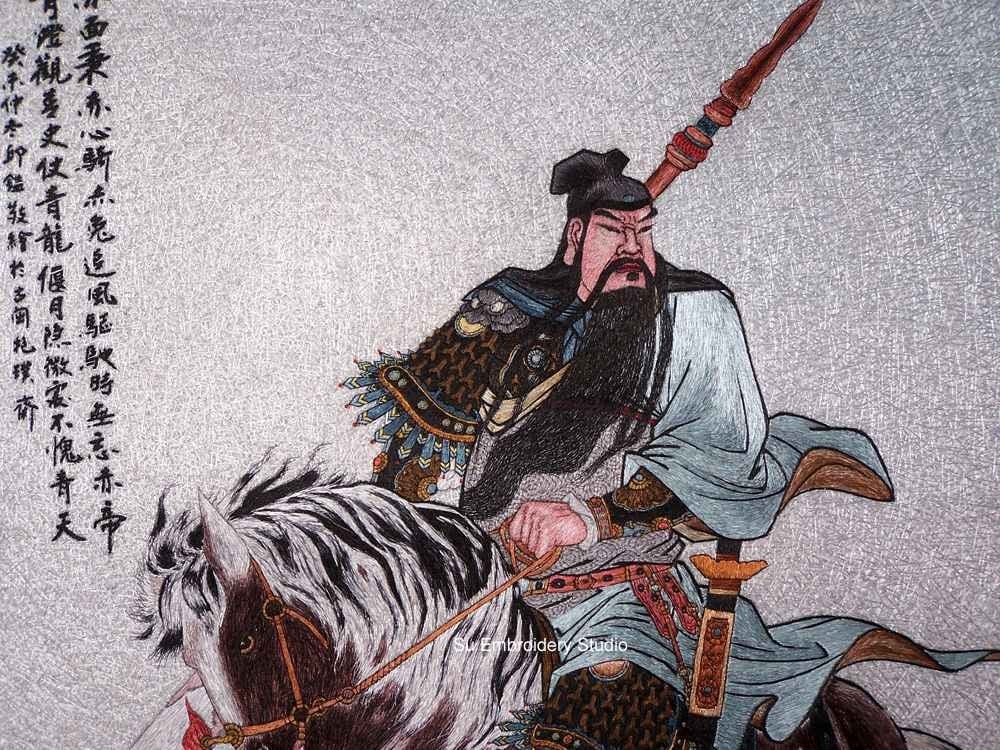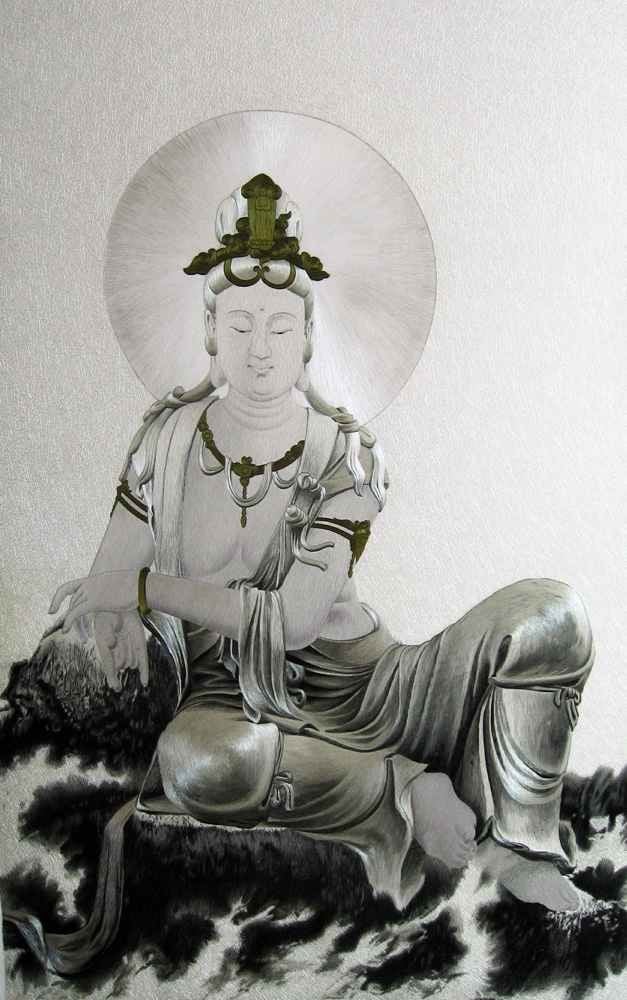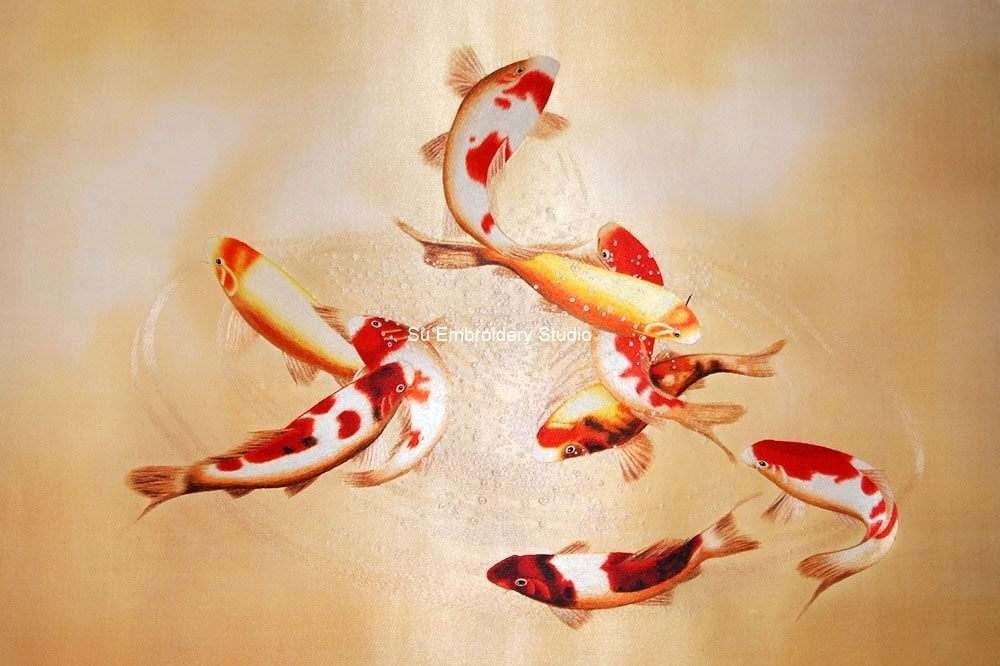
Is Chinese silk embroidery a dying art? This question lingers in the minds of many as the world witnesses rapid technological advancements and shifting cultural trends. Silk embroidery, a traditional craft deeply rooted in China's rich history and cultural heritage, faces numerous challenges in the modern era.
Historical Significance and Evolution
Chinese silk embroidery boasts a rich historical legacy that spans millennia, originating in the cradle of civilization itself. As early as the Neolithic age, the Chinese were cultivating silkworms and spinning silk threads, laying the foundation for one of the world's most celebrated textile traditions. The art of silk embroidery emerged as a natural extension of this ancient craft, with early examples dating back to the Shang Dynasty (1600–1046 BC).
During the Han Dynasty (202 BC-220 AD), silk embroidery flourished as a symbol of wealth, prestige, and artistic sophistication. Nobles and aristocrats commissioned lavish embroidered garments and tapestries, showcasing the mastery of skilled artisans. Embroidery became a revered art form, with techniques and styles evolving to reflect the aesthetic sensibilities of the time.
Over the centuries, silk embroidery underwent a process of refinement and diversification, with different regions of China developing their own distinctive styles and techniques. Suzhou embroidery, originating in the Jiangsu province, emerged as a pinnacle of craftsmanship and artistic expression. Characterized by meticulous stitch work and intricate designs, Suzhou embroidery captured the essence of Chinese aesthetic ideals.
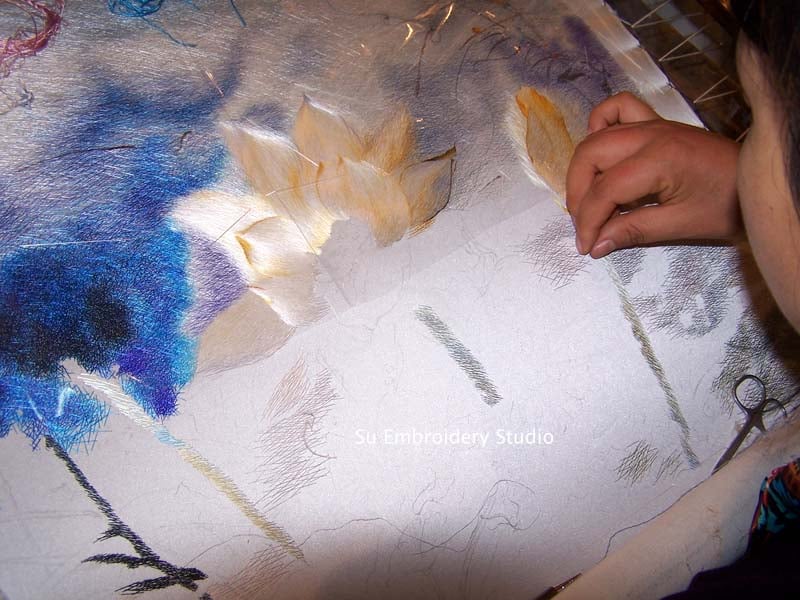
Chinese Suzhou Embroidery, 'Lotus Flowers', in Progress
Other regions, such as Hunan, Guangdong, and Sichuan, also contributed to the rich tapestry of Chinese embroidery with their unique interpretations and regional variations. From the vibrant colors of Guangdong embroidery to the delicate landscapes of Sichuan embroidery, each style reflected the cultural heritage and artistic traditions of its respective region.
While silk embroidery initially remained a luxury reserved for the elite, advancements in trade and cultural exchange during the Tang Dynasty (618–907 AD) facilitated its spread to neighboring regions and beyond. Along ancient trade routes such as the Silk Road, silk embroidery found its way to distant lands, captivating foreign audiences with its exquisite beauty and craftsmanship.
In the Song Dynasty (960–1279 AD), silk embroidery in China became an art form, revered for its elegance, intricacy, and cultural significance. Its evolution from a practical craft to a refined art form mirrored the broader cultural and artistic developments of Chinese civilization, leaving an indelible mark on the world of textile arts.
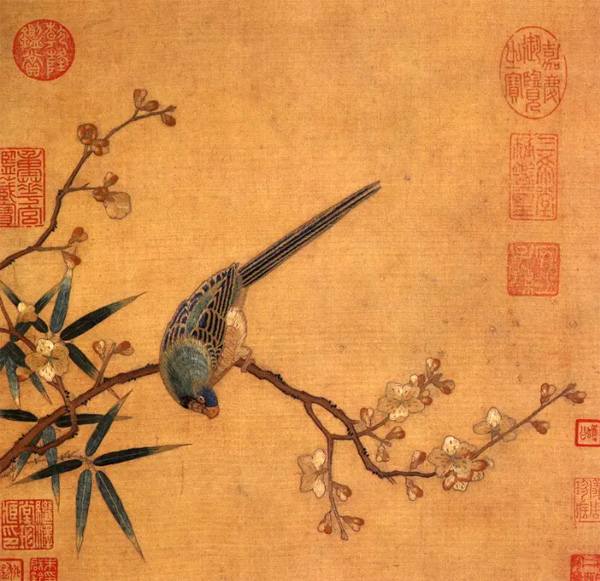
Chinese Silk Embroidery Painting in the Song Dynasty
If you are interested in learning more about the evolution history of Chinese silk embroidery, please read our article at 'A Creative Evolution - From Traditional Chinese Silk Embroidery to Modern Chinese Silk Embroidery'.
Contemporary Challenges
Despite its illustrious past, Chinese silk embroidery faces numerous challenges in the modern era. One of the most pressing issues is the decline in interest among younger generations. In today's digital age, where instant gratification and convenience are prioritized, the patience and dedication required to master the art of silk embroidery are often overlooked. As a result, fewer young people are pursuing careers in traditional crafts, leading to a scarcity of skilled artisans.
Globalization and mass production have also contributed to the decline of handmade crafts like silk embroidery. With the proliferation of fast fashion and mass-produced goods, there is less demand for artisanal products that require time and meticulous craftsmanship. As consumer preferences shift towards affordability and convenience, the market for high quality handmade silk embroidery diminishes.
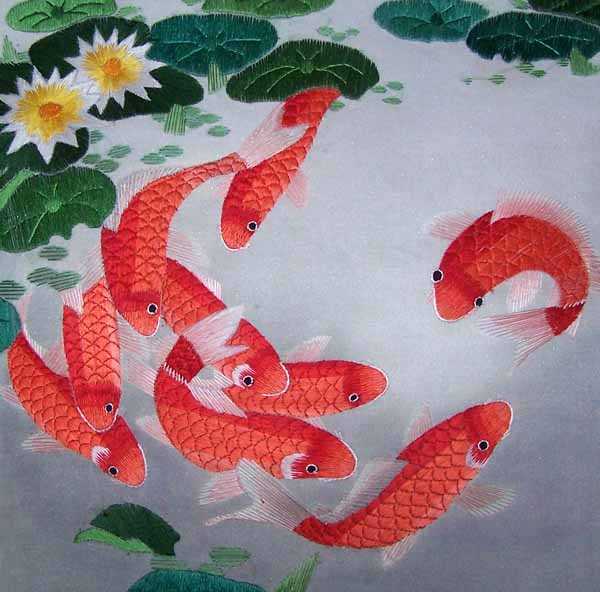
Low Quality Silk Embroideries Popular at Shopping Platforms Due to Their Low Costs and Prices
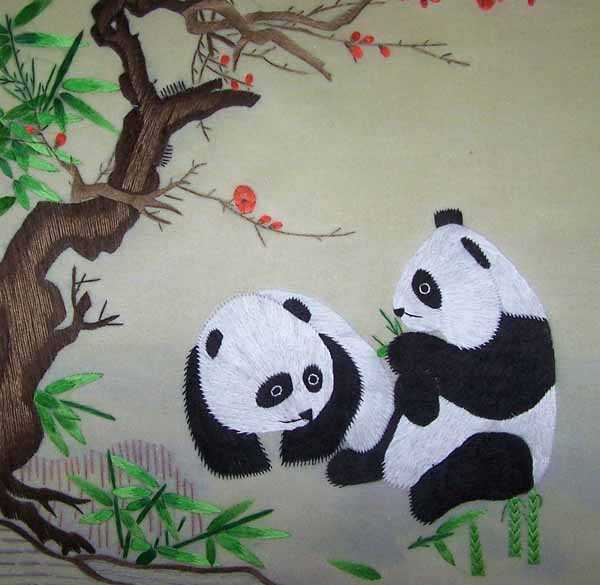
Low Quality Silk Embroideries Popular at Shopping Platforms Due to Their Low Costs and Prices
Furthermore, the rapid pace of technological advancement poses a threat to traditional artisanal techniques. With the advent of automated embroidery machines and digital design software, the need for manual labor and artistic skill is diminished, further marginalizing traditional artisans.
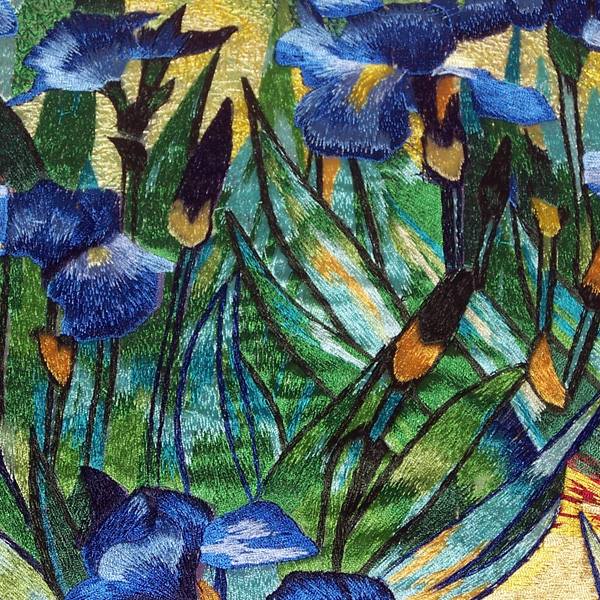
Machine Made Embroideries Look so Similar to Hand Embroidery that Average Customers Can't Tell Their Differences
In the face of these challenges, efforts to preserve and revitalize Chinese silk embroidery are crucial to ensure its survival for future generations.
* Recommended Reading 'How to Judge and Choose Chinese Embroidery' 'How to Tell Hand Embroidery from Machine Embroidery'
Efforts for Preservation and Revitalization
Recognizing the cultural and artistic significance of Chinese silk embroidery, efforts have been made to preserve and revitalize this ancient art form amidst the challenges of modernization and changing societal values. One notable endeavor in this regard is the establishment of institutions dedicated to the preservation and promotion of traditional embroidery techniques.
The Suzhou Embroidery Research Institute stands as a testament to the commitment to safeguarding this cultural heritage. Established in 1954, the institute has played a pivotal role in the inheritance and innovation of Suzhou embroidery traditional techniques. Through rigorous training programs and workshops, it has trained a new generation of skilled artisans, ensuring the continuation of this time-honored craft.
In addition to institutional efforts, individual artisans and studios have also taken up the mantle of preserving and promoting Chinese embroidery art. Su Embroidery Studio, for instance, has been at the forefront of efforts to uphold the legacy of Chinese silk embroidery. With a dedication to craftsmanship and innovation, Su Embroidery Studio combines traditional techniques with modern design concepts, producing exquisite silk embroideries that capture the essence of this ancient art form.

Hyper Realistic Silk Embroideries Comparable to Photographs in Realism
Through participation in exhibitions, cultural exchanges, and educational initiatives, Su Embroidery Studio strives to raise awareness and appreciation for Chinese silk embroidery both domestically and internationally. By showcasing the beauty and intricacy of their creations, they contribute to the ongoing revitalization of this timeless craft, ensuring its continued relevance in the modern world.
Silk Embroidery Art Exhibition by Su Embroidery Studio in Kuala Lumpur
Su Embroidery Studio's Silk Embroidery Art Exhibition at Edinburgh Art Festival
by Su Embroidery Studio (SES), Suzhou China
SES is dedicated to Chinese Silk Embroidery Art and High-End Custom Embroidery
Find SES's embroidery work at Chinese Silk Embroidery for Sale.










